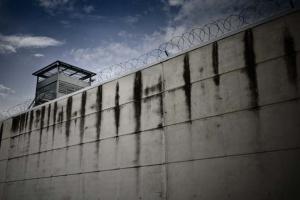Frail, Old and Dying, but Their Only Way Out of Prison Is a Coffin
The New York Times
 “Organizing boycotts, work stoppages inside prisons and the refusal by prisoners and their families to pay into the accounts of phone companies and commissary companies is the only weapon we have left,” said Amos Caley, who runs the Interfaith Prison Coalition, a group formed by prisoners, the formerly incarcerated, their families and religious leaders.
“Organizing boycotts, work stoppages inside prisons and the refusal by prisoners and their families to pay into the accounts of phone companies and commissary companies is the only weapon we have left,” said Amos Caley, who runs the Interfaith Prison Coalition, a group formed by prisoners, the formerly incarcerated, their families and religious leaders.
 In the November, 2014, special issue of Socialism and Democracy, "The Roots of Mass Incarceration in the US: Locking Up Black Dissidents and Punishing the Poor," provides a penetrating analysis of a range of the issues involved and points toward the steps that are needed to turn around these horrors. This publication couldn't be more timely and relevant, as the mighty river of the Black Lives Matter movement flows across and brings new life into the country.
In the November, 2014, special issue of Socialism and Democracy, "The Roots of Mass Incarceration in the US: Locking Up Black Dissidents and Punishing the Poor," provides a penetrating analysis of a range of the issues involved and points toward the steps that are needed to turn around these horrors. This publication couldn't be more timely and relevant, as the mighty river of the Black Lives Matter movement flows across and brings new life into the country.
 The act of illegally crossing the border into the United States used to be treated as a civil offence resulting in deportation. But the decision of the federal government several years ago to treat illegal crossings as a criminal offence has led a mass incarceration of immigrants in segregated facilities.
The act of illegally crossing the border into the United States used to be treated as a civil offence resulting in deportation. But the decision of the federal government several years ago to treat illegal crossings as a criminal offence has led a mass incarceration of immigrants in segregated facilities.
Spread the word